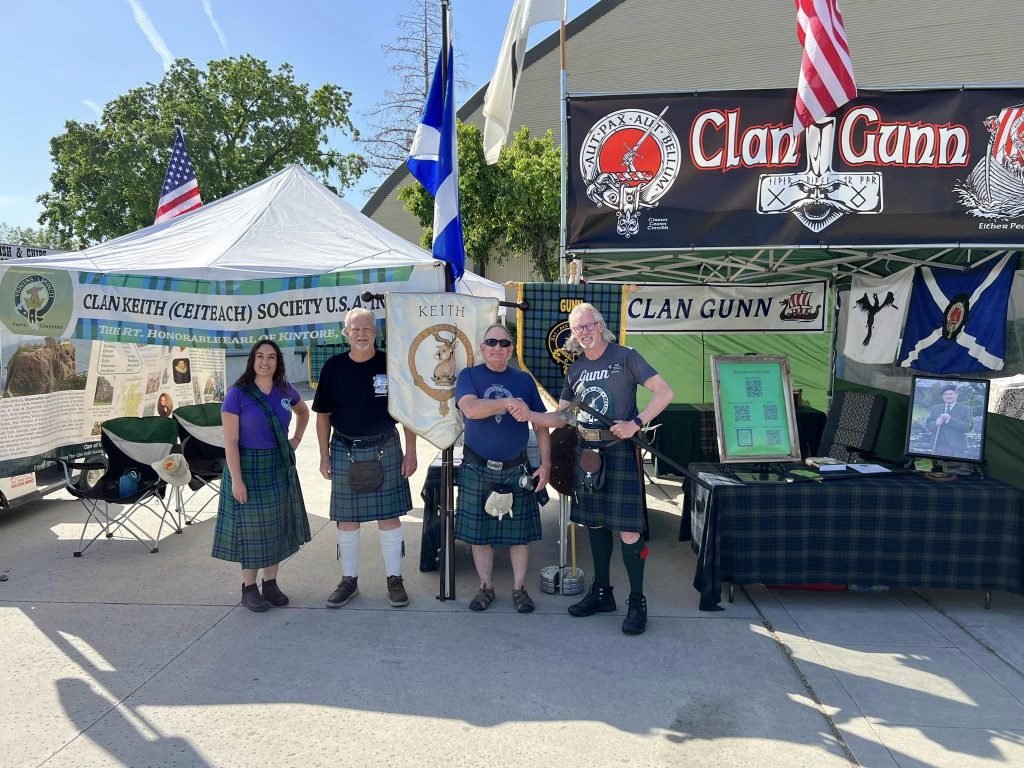The History of Clan Keith
Origins: The Clan Keith, like many Scottish clans, claims a long and noble lineage. They derive their name from the Gaelic “Ceiteach,” which means “wood” or “forest.” The clan’s early roots can be traced to the lands of Keith in East Lothian, Scotland.
Early Years: The earliest known chief of Clan Keith was Hervey de Keith, who lived during the reign of King Malcolm IV in the 12th century. Hervey de Keith was appointed the Great Marischal of Scotland, a position responsible for overseeing the king’s horses and the royal stables. This marked the beginning of the Keiths’ rise to prominence.
Wars of Independence: During the Wars of Scottish Independence in the 14th century, Clan Keith played a significant role. They were loyal supporters of Robert the Bruce and fought valiantly alongside him against English forces. The Battle of Bannockburn in 1314 is one of the most famous battles where Clan Keith distinguished themselves, contributing to Scotland’s victory.
Earls Marischal: The Keiths’ loyalty to the Scottish crown was rewarded with titles and lands. Sir William Keith, a prominent member of the clan, was granted the title of Earl Marischal. The Earls Marischal held a prestigious position in Scottish society, responsible for important ceremonial duties, including guarding the royal regalia and overseeing the coronation ceremonies of Scottish monarchs.
Religious Conflicts: In the 17th century, Clan Keith, like many clans, faced internal divisions during the Scottish Reformation. Some members embraced Protestantism, while others remained loyal to Catholicism. These religious differences led to tensions within the clan but did not diminish their prominence in Scottish society.
Later History: Clan Keith continued to play a role in Scottish history throughout the centuries. They faced challenges during the Jacobite uprisings and experienced fluctuations in their fortunes, like many Scottish clans.
Modern Times: Today, Clan Keith’s legacy endures, and descendants of the clan can be found in Scotland and around the world. Many Keiths take pride in their heritage, preserving their clan’s cultural traditions and participating in events such as Highland Games.
This overview provides a broad perspective on the history of Clan Keith, but there are many more specific details and events associated with the clan’s long and storied history. If you would like more in-depth information about a particular aspect or period of Clan Keith’s history, please feel free to ask.
The History of the Names of Clan Keith
Marshall – When the Earl Marischal was exiled to France a number of his clansmen gathered together to petition the King to bring him back. They organized meetings and continued as an organization until he was allow to come back to visit late in life. They were collectively known as the Marshall’s men and were identified as that publicly. Eventually, many took a shortened version of that as their name since everyone was calling them that. So, Marshall isn’t really a name, but a title that many Keith’s took as their name. I found someone on-lines years ago in a Marshall forum with a letter from our current chief’s grandfather attesting to this as historical fact.
Lumgair, Lum, Lumgain- This is the name of a village in the Lothians that was part of the Earl Marischal’s domain. Folks who came from that village were likely originally named ‘de Lumgair’, meaning from Lumgair and this was shortened to Lumgair.
Dickson, Dickison, Dickinson, Dickerson, Dixson, Dixon- The Dicksons (all spellings) are descended from Richard de Keith, who was called Dick. He was a hero in a battle (that I can’t remember which one, but it was in western Scotland) and his son Robert would introduce himself as “Robert Keith Dick’s son” so everyone would know he was the son of the famous hero. After some time he and all his descendants were known as Dickson. The various spellings are due to regional accents and how other’s heard it. Dixson is common in the lowlands and Dixon is common for those who moved to England.
Harvey, Hervey, Urie- These are descendants of Harvey de Keith who was a knight in his own rights and they were called Harvey so as not to confuse themselves with their more famous cousin’s the Earl Marischal and his family. (Harvey de Keith was the father of Richard Keith so the Harvey’s and the Dickson’s are closely related).
Falconer/Faulkner- This noble family married into the Keiths when one of their own married the daughter of the Earl Marischal who did not have any sons, so a Falconer became our chief.
Austin, Oisten, Austen- The Austin family was closing associated with the Keiths, but was not part of the clan. They are another Catti family that came over from the European lowlands to Scotland in 1,000 AD with the Keiths and many others who were given land in the NE of Scotland when they promised to fight the Vikings who were raiding Scotland. Once again, the Earl Marischal didn’t have a son and an Austin married his daughter inheriting the chiefship and joining his relations to the Clan Keith.
Kate, Kite- I assume that this is a misspelling of Keith based on a regional accent or Gaidhlig pronunciation.
The Keith/Gunn Fued
Bond of Friendship

By the 1970s, with North American members of both clans on friendly terms, the feud between them was no longer an issue. At the urging of their clan members, the Chief of Clan Keith, Sir James Ian Keith, Earl of Kintore, and the Chief of Clan Gunn, Ian Alexander Gunn of Banniskirk, signed a “Bond and Covenant of Friendship” on 28 July 1978, at the site of St. Tears on the 500th anniversary of the battle there. The treaty has since been celebrated by some members of both clans at Highland games and other common gatherings
